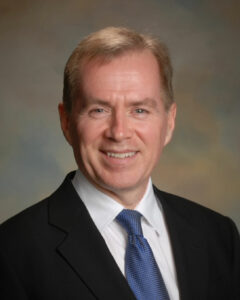I don’t need to tell anyone reading this article that it has been quite a year in health care. With an environment defined by political polarization and its intersection with COVID, health and health care disparities, tenuous health care economics, burnout, and predictions of a “great resignation” where does patient safety fit into a strategic path forward?
Considering the complexity of systems of health care, it should not be surprising that safety problems are endemic in health care. We must work from a foundation of safety to achieve the purpose and goals of health care. Safety should be embedded in every decision and action we take. From a systems perspective, patients want to know that the care they receive is patient-centric, safe and reliable, and meets their quality expectations. They want to know that the health care providers caring for them are clinically competent, have interpersonal competence, and have primacy of the patient’s interest. In a word, they want to trust the system and people that care for them.
So how are we doing with trust? A recent gallop poll found that in 2019, only 36% of individuals had “a great deal” or “quite a lot of confidence” in the medical system.1 Due primarily to the heroic efforts of health care workers during the peak of the COVID pandemic, the number increased to 51% in 2020.1 However, in 2021, in an environment of controversy regarding medical advice on wearing masks and vaccine mandates, the trust metric decreased to 44%.1
WE HAVE WORK TO DO!
This past year, the Anesthesia Patient Safety Foundation (APSF) has been laser-focused on our vision “that no one shall be harmed by anesthesia care.” That vision should be entrenched throughout the experiences of the patient during the entire perioperative process, and beyond. In short, we aspire to a system without preventable harm, returning patients to their baseline or an improved state of physical, cognitive, and psychological health.
In February of 2022, we held a strategic planning session with the objective to innovate and seek new projects that would have high impact on fulfilling our vision. Although there were literally scores of ideas, we settled on three:
- Develop two-way communication with patients. To that end, we have added the patient’s voice to our discussions and decisions and are working on patient-facing material that patients can use to improve their perioperative experience.
- Engage the next generation of anesthesia professionals. To accomplish this goal, we are in the development phase with the American Society of Anesthesiologists to provide basic educational modules on patient safety to all learners and early career anesthesia professionals.
- Enhance the implementation of disruptive technology. The future of health care promises to add more robust data collection and advanced clinical decision support tools. Machine learning, artificial intelligence, and wearable sensors have already been introduced into the perioperative space. These innovations have great promise to improve quality and safety, but also have inherent risk if not implemented correctly. Our first step in this endeavor will be our 2023 Stoelting Consensus Conference, which will address this new era of health care safety issues as they relate to emerging technologies.
We continue to work the levers of action by which we turn ideas into action, and action into results. They include research, education, our Newsletter, other communication vehicles (e.g., social media), collaboration with other stakeholders in patient safety, and advocacy. With limited resources we will continue to strategically exercise these levers to make continued progress in the fight against preventable harm. Our focus over the next year will be directed at our ten priorities (https://www.apsf.org/patient-safety-priorities/). These include:
- Culture of Safety
- Teamwork
- Clinical Deterioration
- Non-Operating Room Anesthesia
- Perioperative Brain Health
- Opioid-Related Harm
- Medication Safety
- Infectious Diseases
- Clinician Safety
- Airway Management
We have a deeply committed group of volunteers who I am confident will rise to the challenges of health care that will occur in the perioperative space over the next decade, and the solutions that patient safety engender. We rely on your financial support to achieve our goals, and we will use our resources wisely to ensure that anesthesiology remains a leader in perioperative safety to the benefit of our patients and providers. Sometimes it is best to resist change, sometimes to align with change, but we at the APSF will be proactive to continue our work to fulfill our vision “that no one shall be harmed by anesthesia care.” It is indeed a sacred trust that we have with our patients and our goal is to further the foundation of trust on which our specialty has been built.
Dan Cole, MD, is professor of clinical anesthesiology in the Department of Anesthesiology and Perioperative Medicine, David Geffen School of Medicine, University of California at Los Angeles. He is also the current president of the Anesthesia Patient Safety Foundation.
The author has no conflicts of interest.
References
- https://news.gallup.com/poll/352316/americans-confidence-major-institutions-dips.aspx. Acccessed on November 26, 2022.


 Issue PDF
Issue PDF PDF
PDF